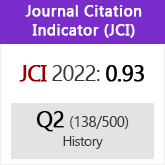La túnica de hierro de Vimose (Fionia, Dinamarca): nuevas investigaciones en torno a la confección de cotas de malla
DOI:
https://doi.org/10.3989/gladius.2015.0005Palabras clave:
Cota de Malla, Época Romana, Ofrendas de Armas, Barbaricum, ConfecciónResumen
La cota de malla de Vimose (Fionia, Dinamarca) se encuentra en un estado extraordinario pese a corresponder a un artefacto de época Romana. Un examen detallado demuestra que su confección es muy similar a las túnicas romanas y difiere de las cotas de malla medievales. Los apliques para regular la apertura del cuello parecen un fenómeno germánico local. Precisamente esta mezcla de elementos germánicos y romanos en la cota de Vimose es excelente evidencia para el estudio de la manufactura local de las cotas de malla en el ámbito germánico septentrional.
Descargas
Citas
Bishop, M.C. & Coulston, J.C.N. (2006): Roman Military Equipment: From the Punic Wars to the Fall of Rome (2nd edition). Oxford, Oxbow Books.
Burgess, E.M. (1953a): "The Mail-Maker's Technique", The Antiquaries Journal XXXIII: 48-55. http://dx.doi.org/10.1017/S0003581500058856
Burgess, E.M. (1953b): "Further Research into the Construction of Mail Garments", The Antiquaries Journal XXXIII: 193-202. http://dx.doi.org/10.1017/S0003581500059382
Burgess, E.M. (1957): "The Mail Shirt from Sinigaglia", The Antiquaries Journal XXXVII: 199-205. http://dx.doi.org/10.1017/S000358150008149X
Burgess, E.M. (1958): "A Mail Shirt from the Hearst Collection", The Antiquaries Journal XXXVIII: 197-204. http://dx.doi.org/10.1017/S0003581500081944
Burgess, E.M. (1960): "A Reply to Cyril Stanley Smith on Mail Making Methods", Technology and Culture 1 (2): 151-155. http://dx.doi.org/10.2307/3101057
Burgess, E.M. & Robinson, H.R. (1956): "A 14th Century Mail Hood in the Scottish Museum, Edinburgh", Journal of Arms and Armour II: 59-63.
Carnap-Bornheim, C. von (1997): "Neue Forschungen zu den beiden Zierscheiben aus dem Thorberger Moorfund". Germania 75 (1): 69-99.
Carnap-Bornheim, C. von (2004): "Römische Militaria aus dem Thorsberger Moor: Fundzusammensetzung, Kontext, Interpretation". In M. Erdrich & C. von Carnap-Bornheim (eds.), Corpus der römischen Funde im europäischen Barbaricum, Deutschland 5, Bonn, Dr. Rudolf Habelt GmbH: 15-24.
Checksfield, N., Edge, D. & Williams, A. (2012): "Examination and Assessment of the Wenceslaus Mail Hauberk", Acta Militaria Mediaevalia VIII: 229-242.
Croom, A. (2010): Roman Clothing and Fashion . Stroud, Amberley Books.
Engelhardt, C. (1863): Thorsbjerg Mosefund. Copenhagen, Thieles Bogtrykkert.
Engelhardt, C. (1866): Denmark in the Iron Age . London, Williams and Norgate.
Engelhardt, C. (1869): Vimose Fundet . Copenhagen, Thieles Bogtrykkert.
Engström, J. (1992): "Skandinaviskt krigsväsen under mellersta järnåldern", Meddelande från Armémuseum 52:14-72.
Frangioni, L. (1978): "Una cotta di maglia milanese a Firenze sulla fine del Trecento". In Studi in memoria di Federigo Melis Vol. II, Firenze, Giannini Editore: 479-495.
Fuhrmann, I. (1942): "Zum Moorgewand von Reepsholt", Prähistorische Zeitschrift 32-33: 339-365.
Granger-Taylor, H. (1982): "Weaving Clothes to Shape in the Ancient World: The Tunic and the Toga of the Arringatore", Textile History 13 (I): 3-25. http://dx.doi.org/10.1179/tex.1982.13.1.3
Hald, M. (1946): "Ancient Textile Techniques in Egypt and Scandinavia: A Comparative Study", Acta Archaeologica 17: 49-98.
Hald, M. (1980): Ancient Danish Textiles from Bogs and Burials: A Comparative Study of Costume and Iron Age Textiles . Copenhagen, National Museum of Denmark.
Hansen, L. (2003): Die Panzerung der Kelten: Eine Diachrone und Interkulturelle Untersuchung eisenzeitlicher Rüstungen . Kiel, Hansadruck.
James, S. (1990): The Arms and Armour from Dura-Europos, Syria: Weaponry Recovered from the Roman Garrison Town and the Sassanid Siegeworks during the Excavations, 1922-37 Vol. I-II. PhD Thesis, University College London.
James, S. (2004): Excavations at Dura-Europos 1928-1937: Final Report VII: The Arms and Armour and other Military Equipment . London, The British Museum Press.
Jouttijarvi, A. (1995): "Technische Untersuchung der kaiserzeitliche Ringbrünne von Brokaer". Acta Archaeologica 66: 102-105.
Jouttijärvi, A. (1996): "Early Iron - The Manufacture of Chain-Mail". In H. Lyngstrøm (ed.), Netvaerk for Tidlig Jernteknologi, Copenhagen, Tutein & Koch: 53-60.
Laking, G.F. (1920): "Chain Mail and Interlined Textile Defences". In A Record of European Armour and Arms through Seven Centuries Vol. II, London, Bell and Sons Ltd: 167-189.
Lau, N. (2010): "Zum Ritus der Opferung von Kriegsbeute in der jüngeren römischen Kaiserzeit: Spuren ritueller Zerstörungen an Pferdgeschirren aus dem Thorsberger Moorfund". In A.W. Busch & H.-J. Schalles (eds.), Waffen in Aktion: Akten der 16. Internationalen Roman Military Equipment Conference . Mainz am Rhein, Verlag Philipp von Zabern: 137-152.
Lund Hansen, U. (2007): "Barbarians in the North: The Greatest Concentration of Roman Weaponry in Europe". In T. Grane (ed.), Beyond the Roman Frontier: Roman Influences on the Northern Barbaricum . Rome, Quasar: 105-130.
Matesic, S. (2008): "Militaria im Thorsberger Moorfund: Zeugnisse römisch-germanischer Kontakte". In A. Abegg-Wigg & A. Rau (eds.), Aktuelle Forschungen zu Kriegsbeuteopfern und Fürstengr.bern im Barbaricum . Neumünster, Wachholtz Verlag: 85-104.
Matesic, S. (2011): Die militärischen Ausrüstungen aus dem Thorsberger Moor: Vergleichende Untersuchung zur römischen und germanischen Bewaffnung während der jüngeren römischen Kaiserzeit Vol. I-II, Unpublished PhD Thesis, University of Cologne.
Möller-Wiering, S. (2011): War and Worship: Textiles from 3rd to 4th-Century AD Weapon Deposits in Denmark and Northern Germany . Oxford, Oxbow Books.
Moor, A. de, Berghe, I. vanden, Strydonck, M. van, Boudin, M. & Fluck, C. (2010): "Radiocarbon Dating and Dye Analysis of Roman Linen Tunics and Dalmatics with Purple Coloured Design", Archaeological Textiles Newsletter 51: 34-47.
Nockert, M. (1991): The Högom Find and Other Migration Period Textiles and Costumes in Scandinavia . Umeå, University of Umeå.
Pauli Jensen, X. (2003): "The Vimose Find". In L. Jørgensen, B. Storgaard & L. Gebauer Thomson (eds.), The Spoils of Victory: The North in the Shadow of the Roman Empire, Gylling, Narayana Press: 224-238.
Pauli Jensen, X. (2007): "Preliminary Remarks on Roman Military Equipment from the War Booty Sacrifice of Vimose, Denmark". In T. Grane (ed.), Beyond the Roman Frontier: Roman Influences on the Northern Barbaricum . Rome, Quasar: 131-136.
Pauli Jensen, X. (2008): Våpen fra Vimose: Bearbejdning og tolkning af et gammelkendt fund. Unpublished PhD Thesis.
Pauli Jensen, X. (2009): "From Fertility Rituals to Weapon Sacrifices: The Case of the South Scandina vian Bog Finds". In U. Freeden, H. Friesinger & E. Wamers (eds.), Glaube, Kult und Herrschaft: Phänomene des Religiösen im 1. Jahrtausend n. Chr. in Mittel- und Nordeuropa: Akten des 59. Internationalen Sachsensymposions und der Grundprobleme der frühgeschichtlichen Entwicklung im Mitteldonauraum, Bonn, Dr. Rudolf Habelt GmbH: 53-64.
Pauli Jensen, X. (2011): "Friend or Foe: Alliances and Power Structures in Southern Scandinavia during the Roman Iron Age", Lund Archaeological Review 2011: 35-47.
Pauli Jensen, X. (2013): "Imitation and Transformation - Roman Militaria in South Scandinavian Grave Finds". In M. Sanader, A. Rendi?-Mio?evi?, D. Ton?ini & I. Radman-Livaja (eds.), XVII Roman Military Equipment Conference Zagreb 2010, Zagreb, Arheolo?ki muzej u Zagrebu: 177-183.
Pausch, M. (2003): Die römische Tunika: Ein Beitrag zur Peregrinisierung der antiken Kleidung. Augsburg, Wißner-Verlag.
Potratz, H. (1942): Das Moorgewand von Reepsholt, Kr. Wittmund (Ostfriesland) . Hildesheim, August Lax.
Pritchard, F. (2006): Clothing Culture: Dress in Egypt in the First Millennium AD; Clothing from Egypt in the Collection of the Whitworth Art Gallery . Manchester, Whitworth Art Gallery.
Przybyla, M.J. (2010): "Bemerkungen zu einigen lokalen Formen der Schwertgürtelschließen von sog. Balteus-Typ aus dem Barbaricum", Recherches Archéologiques: Nouvelle Série 2: 93-184.
Raddatz, K. (1959-1961): "Ringknaufschwerter aus germanischen Kriegergräbern", Offa 17-18: 26-55.
Raddatz, K. (1987): Der Thorsberger Moorfund: Katalog: Teile von Waffen und Pferdegeschirr, sonstige Fundstücke aus Metall und Glas, Ton- und Holzgefäße, Steingeräte . Neumünster, Karl Wachholtz Verlag.
Rasmussen, B.M. (1995): "Brokaer: Ein Reichtumszentrum der römischen Kaiserzeit in Südwestjütland", Acta Archaeologica 66: 39-101.
Reid, W. & Burgess, E.M. (1960): "A Habergeon of Westwale". The Antiquaries Journal XL: 46-57. http://dx.doi.org/10.1017/S0003581500061461
Robinson, H.R. (1975): The Armour of Imperial Rome . London, Arms and Armour Press.
Scalini, M. (1996): "The 'Textile' Protections and Various Other Items in the Armoury". In The Armoury of the Castle of Churburg . Udine, Magnus Edizioni SpA: 190-197.
Schlabow, K. (1976): Textilfunde der Eisenzeit in Norddeutschland . Neumünster, Karl Wachholtz Verlag.
Schmid, E.D. (2003). "Details from Articles of Mail in the Wallace Collection", The Journal of the Mail Research Society 1 (1): 2-20.
Schmidt-Colinet, A. (2000): "Einleitung". In A. Schmidt-Colinet (ed.), Die Textilien aus Palmyra, Mainz am Rhein, Verlag Philipp von Zabern: 1-7.
Stauffer, A. (2000): "Material und Technik", In A. Schmidt-Colinet (ed.), Die Textilien aus Palmyra: Neue und Alte Funde, Mainz am Rhein, Verlag Philipp von Zabern: 8-40.
Sumner, G. (2009): Roman Military Dress . Gloucestershire, The History Press.
Trapp, O. (1995 [1929]): "Mail and Brigandine". In The Armoury of the Castle of Churburg , J.G. Mann (transl.), Udine, Magnus Edizioni SpA: 3-14.
Vedeler, M. & Jørgensen, L.B. (2013): "Out of the Norwegian Glaciers: Lendbreen - A Tunic from the Early First Millennium AD", Antiquity 87 (337): 788-801. http://dx.doi.org/10.1017/S0003598X00049462
Verhecken-Lammens, C. (2010): "Piecing Together a Roman Linen Tunic", Archaeological Textiles Newsletter 51: 31-33.
Voß, H.-U. (1998): Corpus der römischen Funde im europäischen Barbaricum, Deutschland 3, Bonn, Dr. Rudolf Habelt GmbH.
Voß, H.-U. (2000): "Das Fürstengrab 9/1995 von Hagenow in Mecklenburg-Vorpommern". In L. Wamser (ed.), Die Römer zwischen Alpen und Nordmeer: Zivilisatorisches Erbe einer europäischen Militärmacht, Mainz, Philipp von Zabern: 197-200.
Voß, H.-U. (2007): "From the Baltic to the Danube: Early Roman Iron Age Warriors from Hagenow, Mecklenburg, and Their Relations with Barbarian and Roman Worlds", Archaeologia Baltica 8: 58-68.
Voß, H.-U. (2008): "Zwischen Vannius-Reich und Vimose: Die elitären Krieger von Hagenow". In A. Abegg-Wigg & A. Rau (eds.), Aktuelle Forschungen zu Kriegsbeuteopfern und Fürstengr.bern im Barbaricum, Neumünster, Wachholtz Verlag: 253-277.
Waurick, G. (1982): "Die römische Kettenrüstung von Weiler-la-Tour", Hémecht 34: 111-130.
Wijnhoven, M.A. (2009): "The Ouddorp Lorica: A Study of Roman Lorica Hamata Squamataque", The Journal of the Mail Research Society 2 (1): 30-65.
Wild, J.P. (1970): "Button-and-Loop Fasteners in the Roman Provinces", Britannia 1: 137-155. http://dx.doi.org/10.2307/525837
Descargas
Publicado
Cómo citar
Número
Sección
Licencia
Derechos de autor 2015 Consejo Superior de Investigaciones Científicas (CSIC)

Esta obra está bajo una licencia internacional Creative Commons Atribución 4.0.
© CSIC. Los originales publicados en las ediciones impresa y electrónica de esta Revista son propiedad del Consejo Superior de Investigaciones Científicas, siendo necesario citar la procedencia en cualquier reproducción parcial o total.Salvo indicación contraria, todos los contenidos de la edición electrónica se distribuyen bajo una licencia de uso y distribución “Creative Commons Reconocimiento 4.0 Internacional ” (CC BY 4.0). Puede consultar desde aquí la versión informativa y el texto legal de la licencia. Esta circunstancia ha de hacerse constar expresamente de esta forma cuando sea necesario.
No se autoriza el depósito en repositorios, páginas web personales o similares de cualquier otra versión distinta a la publicada por el editor.














